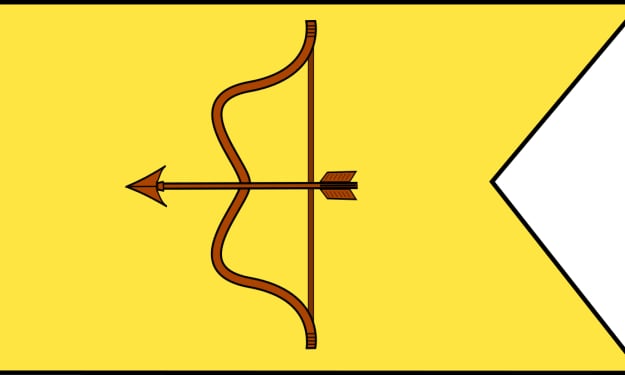Chalukya dynasty
History of Chalukya dynasty

The Chalukya dynasty was a royal Indian dynasty that ruled parts of present-day Gujarat, Karnataka, and Andhra Pradesh. The Chalukyas were known for their military prowess and their cultural achievements. The dynasty was founded by Pulakeshin I in the 6th century CE, and it rose to prominence in the 7th and 8th centuries CE, under the rule of Pulakeshin II.
The Chalukya kingdom was located in the western Deccan region of India, and it included parts of present-day Gujarat, Karnataka, and Andhra Pradesh. The capital of the Chalukya kingdom was located at Vatapi (modern-day Badami), and the kingdom was divided into several provinces, each ruled by a chieftain.
The Chalukyas were known for their military prowess, and they were able to conquer and annex many neighboring kingdoms, including the Rashtrakutas, the Pandyas, and the Pallavas. They were also known for their cultural achievements, and they supported the growth of literature, art, and architecture. The Chalukya period saw the development of the Kannada language and the construction of many temples and shrines, including the famous Cave Temples of Badami.
The Chalukya dynasty came to an end in the 12th century CE, with the rise of the Hoysalas and the Kalachuris. However, the legacy of the Chalukyas lives on in the present-day Indian states of Gujarat, Karnataka, and Andhra Pradesh, where they are remembered for their contributions to the region's culture and historyThe Chalukya dynasty was founded by Pulakeshin I in the 6th century CE. He was a powerful ruler who was able to unite the various Chalukya clans and establish a strong kingdom.
The Chalukya kingdom reached its peak of power and prosperity under the rule of Pulakeshin II, who ruled from 610-642 CE. During his reign, the Chalukyas defeated the Pallavas and the Rashtrakutas and expanded their kingdom to include parts of present-day Gujarat, Karnataka, and Andhra Pradesh.
The Chalukya kingdom was known for its cultural achievements, and it was a major center of learning and scholarship. The Chalukya period saw the development of the Kannada language and literature, and many temples and shrines were built during this time, including the famous Cave Temples of Badami.
The Chalukyas were followers of the Hindu religion, and they supported the growth of Hinduism in the region. They also patronized Jainism, and many Jain temples and monasteries were built during their rule.
The Chalukya dynasty came to an end in the 12th century CE, with the rise of the Hoysalas and the Kalachuris. However, the legacy of the Chalukyas lives on in the present-day Indian states of Gujarat, Karnataka, and Andhra Pradesh, where they are remembered for their contributions to the region's culture and historyThe Chalukyas were known for their military prowess, and they were able to conquer and annex many neighboring kingdoms, including the Rashtrakutas, the Pandyas, and the Pallavas. They were also able to maintain a strong defense against invasions by the Arab and Turkic armies.
The Chalukya kingdom was known for its cultural achievements, and it was a major center of learning and scholarship. The Chalukya period saw the development of the Kannada language and literature, and many temples and shrines were built during this time, including the famous Cave Temples of Badami.
The Chalukyas were patrons of the arts, and they supported the growth of literature, art, and architecture. The Chalukya period saw the construction of many temples, shrines, and monasteries, and it was a time of great cultural and artistic achievement.
The Chalukyas were followers of the Hindu religion, and they supported the growth of Hinduism in the region. They also patronized Jainism, and many Jain temples and monasteries were built during their rule.
The Chalukya kingdom was a major center of trade and commerce, and it had close ties with the Roman Empire and other countries in the Mediterranean. The Chalukyas were known for their naval power, and they played a major role in the trade and commerce of the region.The Chalukya kingdom was a Hindu kingdom, and the rulers and the people followed the Hindu religion. The Chalukyas were patrons of Hinduism, and they supported the growth of Hindu temples and shrines.
The Chalukyas were also patronizers of Jainism, and many Jain temples and monasteries were built during their rule.
The Chalukya period saw the development of the Kannada language and literature. Kannada literature flourished during this time, and many important works in Kannada were produced, including the Jain work "Vaddaradhane" and the Hindu work "Kavirajamarga".
The Chalukya kingdom was a major center of trade and commerce, and the people were engaged in trade, agriculture, and other economic activities. The Chalukyas were known for their naval power, and they played a major role in the trade and commerce of the region.
The Chalukya period was a time of great cultural and artistic achievement, and the people were known for their love of the arts. The Chalukyas supported the growth of literature, art, and architecture, and many temples, shrines, and monasteries were built during this timeThe Chalukya dynasty came to an end in the 12th century CE, with the rise of the Hoysalas and the Kalachuris. The last ruler of the Chalukya dynasty was Vikramaditya VI, who ruled from 1076-1126 CE. After his death, the Chalukya kingdom was divided among his sons, and the kingdom eventually weakened and collapsed.
There are several factors that contributed to the decline of the Chalukya dynasty, including:
Internal conflict: The Chalukya kingdom was divided among several branches, and there was often conflict between the different branches over succession and territory. This internal conflict weakened the kingdom and made it vulnerable to external attacks.
Invasions by foreign powers: The Chalukya kingdom was invaded by several foreign powers, including the Cholas and the Seunas, which weakened the kingdom and contributed to its decline.
Rise of other dynasties: The Chalukya dynasty was challenged by the rise of other powerful dynasties, such as the Hoysalas and the Kalachuris, which weakened the kingdom and contributed to its decline.
Economic factors: The Chalukya kingdom was heavily dependent on trade and commerce, and the decline of the trade routes and the economic recession of the region may have contributed to the decline of the Chalukya dynasty.
Overall, the decline of the Chalukya dynasty was a complex process that was influenced by a combination of internal and external factors.





Comments
There are no comments for this story
Be the first to respond and start the conversation.